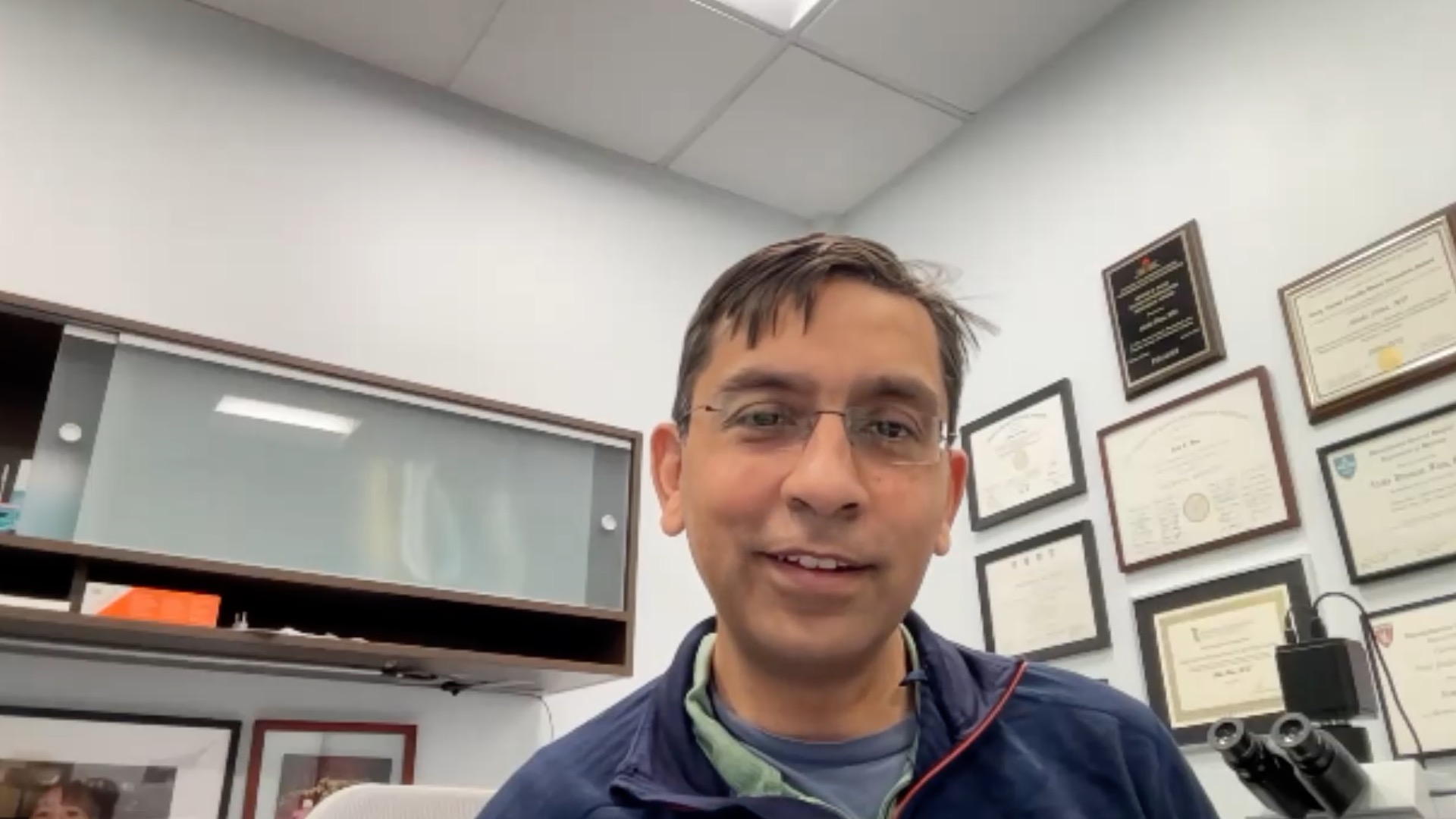Aloke Finn, AFS 2023: Future directions in LAA closure – Antithrombotic coating and avoidance of anticoagulation
Atrial fibrillation (AF) is common place across the United States and globally, with high prevalence and complication of stroke. In this touchCARDIO interview, we speak with Dr Aloke Finn (Medical Director, CVpath Institute; Associate Professor, University of Maryland, College Park, MD, USA) to discuss healing following left atrial appendage (LAA) closure and the use of devices in the healing and risk of device related thrombus formation.
Full transcript available below
The abstract entitled ‘Future Directions in LAA Closure: Antithrombotic Coating and Avoidance of Anticoagulation‘ was presented at the Atrial Fibrillation Symposium, 02 – 04 February 2023.
Watch Dr. Aloke Finn’s takeaways from AF Symposium – A look to the future for left atrial appendage occlusion devices
Questions:
- Could you give us a brief overview of the standard approaches in the prevention of stroke? (0:28)
- Could you give an overview of your talk on the future directions in left atrial appendage closure? (2:51)
Disclosures: Aloke Finn has received grant/research support, and honoraria/honorarium from Boston Scientific and Abbott.
Support: Interview and filming supported by Touch Medical Media. Interview conducted by Katey Gabrysch.
Filmed as a highlight of AFS 2023
Access more content on stroke and atrial fibrillation
Transcript
Could you give us a brief overview of the standard approaches in the prevention of stroke? (0:28)
I’m Aloke Finn, Medical Director at CVpath, as well as Associate Professor at University of Maryland, College Park, MD, USA. Here, we do a lot of work with interventional devices in the basic and clinical research side. I’m very honoured today to be here talking about atrial fibrillation.
As you know, atrial fibrillation is quite a common problem among adults in the United States and throughout the world, almost a nuisance as it’s associated with the devastating complication of stroke. As you’re probably familiar with, we use the CHA2DS2-VASc score to identify which patients need to be on oral anticoagulation in order to prevent and significantly reduce their stroke risk. Now, of course, the problem with being on oral anticoagulation is that it predisposes towards bleeding and there’s a significantly increased risk of bleeding when you’re on an oral anticoagulant. There are populations of people who have atrial fibrillation that really are either too high risk for oral anticoagulation or really don’t qualify. For instance, if you had an intracerebral haemorrhage prior, you certainly wouldn’t want to be put that patient on an oral anticoagulant. So more recently, we’ve identified or we’ve come up with devices that will actually occlude the left atrial appendage. Now, those of you who are familiar with atrial fibrillation will know that it’s thought that most of the clot that forms in the setting of atrial fibrillation that ends up causing strokes comes from the left atrial appendage. And it’s the left atrial appendage really has slow flow. That slow flow predisposes towards clotting and those clots can embolization. Thus we take oral anticoagulants. Now, the idea behind these left atrial appendage closure devices and even surgical approaches is to really obliterate the left atrial appendage as a space so that we decrease the stroke risk. And so now it’s commonly done that patients who are at high risk for bleeding. And probably thought to be intolerant of oral anticoagulants, of atrial fibrillation, can become candidates for left appendage closure. And in the US at least, there are two devices that are approved for this closure. One is called the WATCHMAN device made by Boston Scientific WATCHMAN FLX the current generation and ambulate, which is made by Abbott, which is more recently approved, and these are the approaches that are currently used to prevent stroke in atrial fibrillation.
Could you give an overview of your talk on the future directions in left atrial appendage closure? (2:51)
Let me give you a little bit of an overview of my talk at the AF symposium that I just gave yesterday. The problem, of course, with left atrial appendage closure is that you’re putting a foreign device in the left atrial appendage space. You want the foreign device to heal very quickly, so that it itself does not clot. But in a certain percentage of subjects undergoing these procedures, they get what’s called device related thrombus formation. That is, the device itself develops excessive thrombus and that is associated with increased risk of stroke and systemic embolization. If you think about it, these patients really shouldn’t be on oral anticoagulants or really don’t qualify, but oftentimes they must be put on oral anticoagulants to mitigate or reduce that device related thrombus formation. Therefore, the issue with these devices currently is that they don’t heal particularly quickly. In our own registries, it’s greater than 12 months for full healing of the device. And until that time, the patient is at risk for device related thrombus formation and if device related thrombus formation does occur it’s certainly going to require that patient go back on oral anticoagulants, or to be started on them. This might not be ideal for some patients.
My talk really focused on the issue of healing and whether or not we could improve devices that were used in these procedures in order to make them perhaps more thrombus resistant. That is, the device itself would prevent thrombus formation because it had some coding or some particular change in it, and it would also heal more quickly. That can be done by understanding material chemistry and blood biomaterial interactions. We do know that certain coatings are very good at preventing thrombus formation and perhaps increasing healing. And therefore the subject of my talk was to look into whether we can move this field forward to really change the coding on devices to improve the blood biomaterials compatibility so that we have less rates of device related thrombus formation, and perhaps we can even lower or eliminate the need for adjunctive therapies like antiplatelet agents and anticoagulants in patients receiving these devices.
I think this approach is a very acceptable, and exciting, because finally we are using our knowledge of the body and its chemistry in terms of its blood material interaction to improve the care of patients by changing the devices in a way which may favourably alter their behaviour in the body. Now, I would tell you that I did have I did show some experimental evidence to support this approach. But really, we need data from clinical trials with these newer devices to support that they really are an advance for patients with atrial fibrillation who are not candidates for all oral anticoagulants.
Subtitles and transcript are autogenerated






